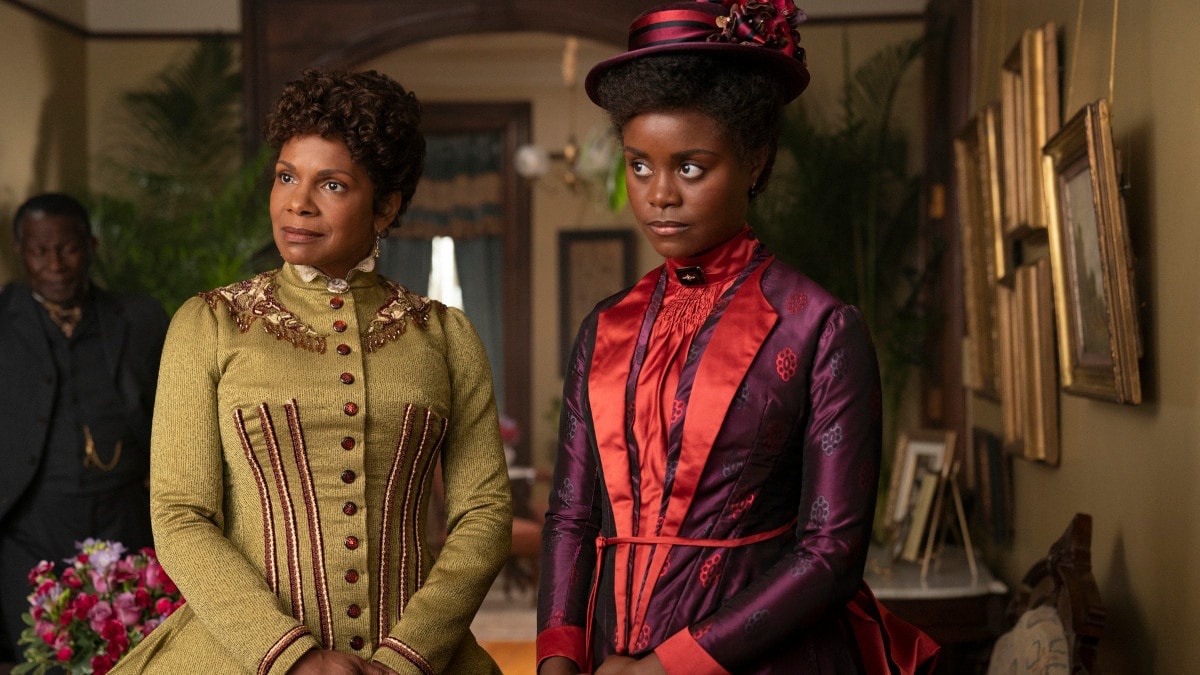The Gilded Age Reminds White Audiences That There Has Always Been a Black Elite

Downton Abbey is entertaining because it crafts a world of privilege that removes the anxieties of money from it. While there is some passive class discussion, it overwhelmingly presents an idea that the nobility and the regular folk do have a kind of harmony that is essential to English-ness. Series creator Julian Fellowes’ new America-based series, The Gilded Age, cannot pretend to have that sort of fictional, sanitized image of class disparity, but it can still broaden who belongs in that illusion by bringing in the Black middle and upper classes.
Peggy Scott (Denée Benton), from her introduction, has always been portrayed as educated, capable, and of a level of sophistication equal too, if not more than, Marian Brook. When Peggy goes home for her mother’s birthday, we get a very clear understanding that when it comes to wealth, Peggy is very much from a comfortable background. Her family lives in a gorgeous brownstone, has their own maid, and is in no need of the used shoes Marian brings as a birthday gift.
As Peggy points out, when they met, she was the one who gave Marian train fare. Marian is the one who is penniless, but due to her assumptions about race, she believes Peggy must be poor. This, folks, is a micro-aggression. Peggy’s father is a pharmacist, and her mother is a pianist.
The Gilded Age‘s historical consultant, Erica Armstrong Dunbar, told The New York Times, “What does the average person know about the Black elite in New York in the 1880s? The answer is very little if anything.” Black History, and specifically Black American History, is taught in fragments, only focusing on the key moments that show up on exams. Growing up, I didn’t learn about Tulsa, Black Wall Street, or the gains that Black Americans made post-Civil War that were eventually undone by weak Republicans and vengeful Democrats. It wasn’t until I started college and graduate school that I began actively learning about Black history in a way that fully explored the rich history we have in this country and across the world.
When it comes to the Black elite, it wasn’t until I read works like The Original Black Elite: Daniel Murray and the Story of a Forgotten Era by Elizabeth Dowling Taylor, Aristocrats of Color: The Black Elite, 1880–1920 (Black Community Studies) by Willard B. Gatewood, Our Kind of People: Inside America’s Black Upper Class by Lawrence Otis Graham, and Black Fortunes: The Story of the First Six African Americans Who Escaped Slavery and Became Millionaires by Shomari Wills, that I truly understood the history that had been kept from me.
Mind you, this isn’t to uplift Black elitism and Black capitalism. It is to address that it is often thrown in Black Americans’ faces that slavery was however many years ago, while ignoring that white America actively worked to ensure Black Americans would not persevere—that the gains were made, fortunes were accumulated, and societies were established, but in a racist world, how much does that matter?
We saw Peggy and her father move to the side so white people could walk by in a previous episode. In this one, we saw Peggy get profiled at Bloomingdale’s. It is a reminder that this isn’t about respectability—it is about race. And while the Russells can slowly make their way in society, the chances of someone like Peggy or her family members being in that same opera box are still more unlikely. The Russells aren’t the underdogs; they are the future.
(image: HBO Max)
Have a tip we should know? tips@themarysue.com